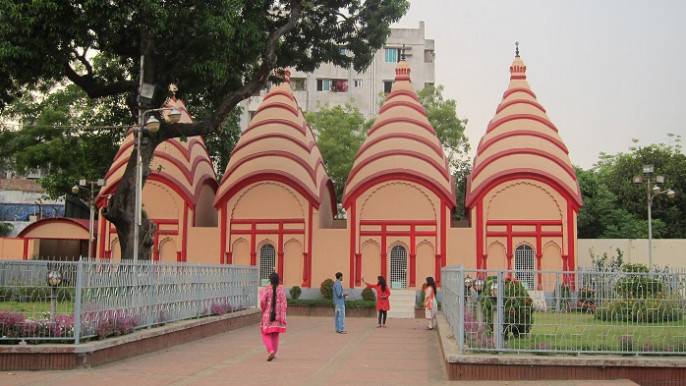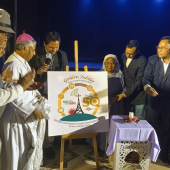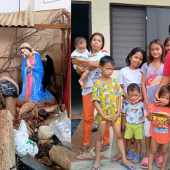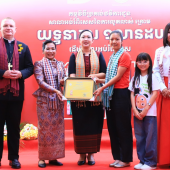Bangladesh: UN official visits Dhakeshwari Temple on International Day of Peace

In continuation of the United Nations Bangladesh's commemoration of the International Day of Peace on September 21, Gwyn Lewis, the UN Resident Coordinator in the country, visited Dhakeshwari Temple in Dhaka.
The visit aimed to highlight the importance of cultural diversity and harmony and the hope of peaceful celebrations this year.
Peace involves creating a world where people are treated equally regardless of their race or any other category.
"We all have a role to play in fostering peace in our families, communities, religions, and countries," Lewis said.
"Peace is the language we must speak for the common good and the growth of human development," he added.
The visit was in connection with Durga Puja (an annual Hindu festival celebrated in the Indian subcontinent that honors and pays homage to the Hindu goddess Durga and commemorates Durga's victory over Mahishasur).
According to a press release, with the Durga Puja festival celebrations to begin in October, the visit was an opportunity to meet with religious groups to better understand the significance of this important celebration.
The United Nations in Bangladesh works to promote empathy and inclusion in the spirit of Agenda 2030's promise to "Leave No One Behind." Last year's Durga Puja was unfortunately marred by violence.
Without peace, it will not be possible to achieve the levels of trust, cooperation, and inclusiveness that are needed for societies to be resilient to shocks, manage disputes, and adapt to changes in their environments.
It requires the building of societies where all members feel that they can flourish and contribute to the common good. It involves creating a world in which people are treated equally, regardless of their race or any other differences.
After being welcomed and greeted by the temple's officials, Lewis had the opportunity to discuss with representatives of Bangladesh Puja Udjapan Parishad and prominent members of the Hindu community before being guided through the temple and its neighborhood, where people from diverse religious and cultural backgrounds cohabit peacefully.
The United Nations invites all countries and peoples to honor a cessation of hostilities during the day and to commemorate it through education and public awareness on issues related to peace.
Lewis was joined by UNESCO Officer-in-Charge, Dr. Susan Vize, and UNDP Deputy Resident Representative Van Nguyen.
Dhakeshwari is a Hindu temple in Dhaka, Bangladesh. It is state-owned. The name "Dhakeshwari" means the so-called "Goddess of Dhaka." It is the largest Hindu temple in Bangladesh, a Muslim-majority country.
Muslims constitute 91% of 166,303,498 people, Hindus make up 8%, Buddhists 0.6%, Christians 0.3%, and others 0.1%.
The Dhakeshwari (Durga) temple was built in the 12th century by Ballal Sen, a king of the Sena dynasty, and it is said that the city of Dhaka was named after the Goddess.
This temple is part of the famous Shakti Peethas in the Indian Subcontinent.
For ages, the temple has been held in great importance. The original 800-year-old image was taken in Kumartuli, Kolkata, in the 1940s.
The idol is 1.5 feet tall, has ten arms, and is mounted on her lion in the form of Katyani Mahishasurmardini Durga. The current idol in Dhakeshwari Temple is a replica of the original idol.
After Islam was recognized by the Bangladeshi government, Hindus also demanded recognition.
Therefore, Hinduism was recognized and this temple was declared the National Temple of Bangladesh.
Currently, its maintenance is done by the Bangladeshi government. As a result, it serves as a national hub for Hindus. - Nikhil Gomes / RVA News
Radio Veritas Asia (RVA), a media platform of the Catholic Church, aims to share Christ. RVA started in 1969 as a continental Catholic radio station to serve Asian countries in their respective local language, thus earning the tag “the Voice of Asian Christianity.” Responding to the emerging context, RVA embraced media platforms to connect with the global Asian audience via its 21 language websites and various social media platforms.














